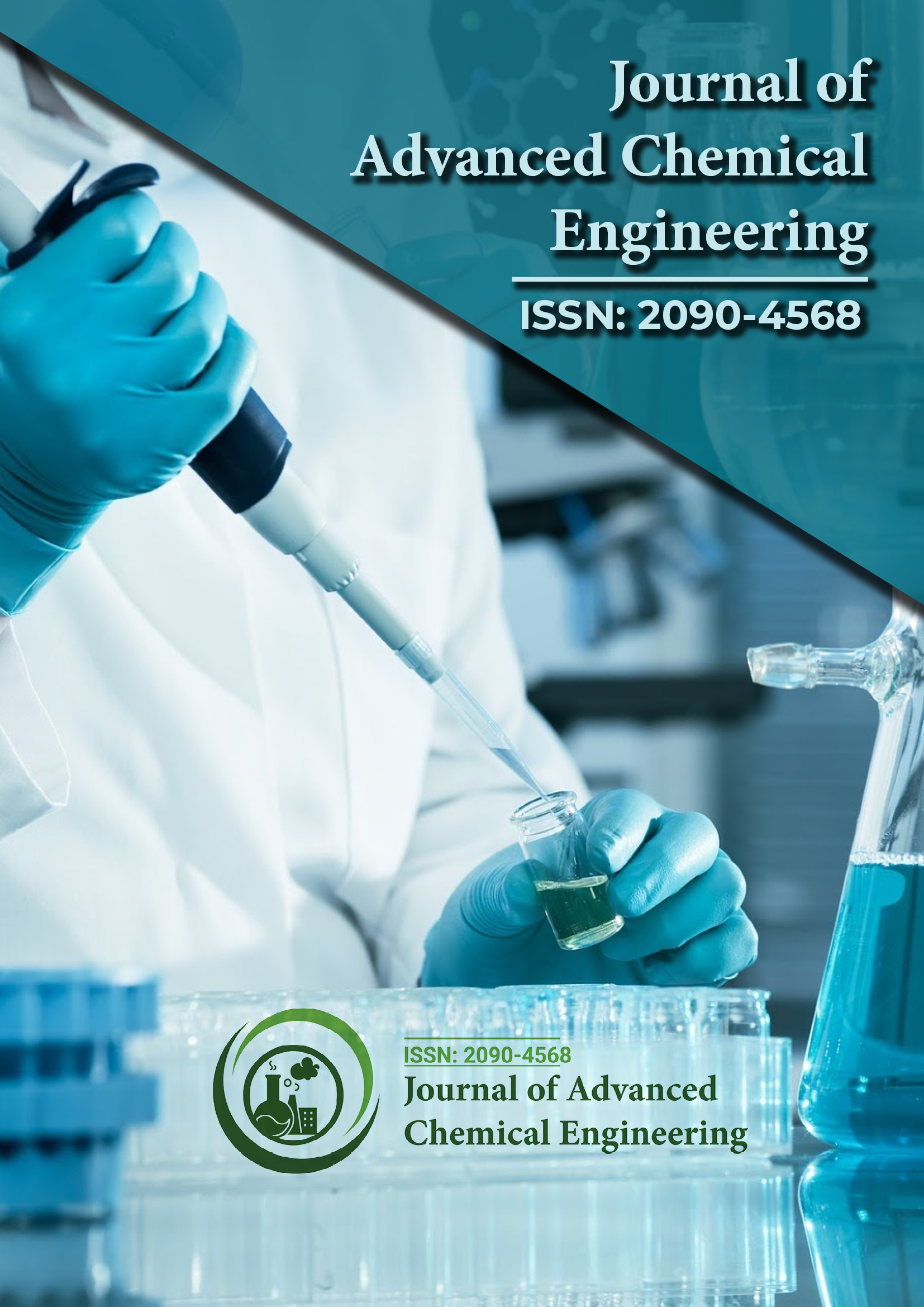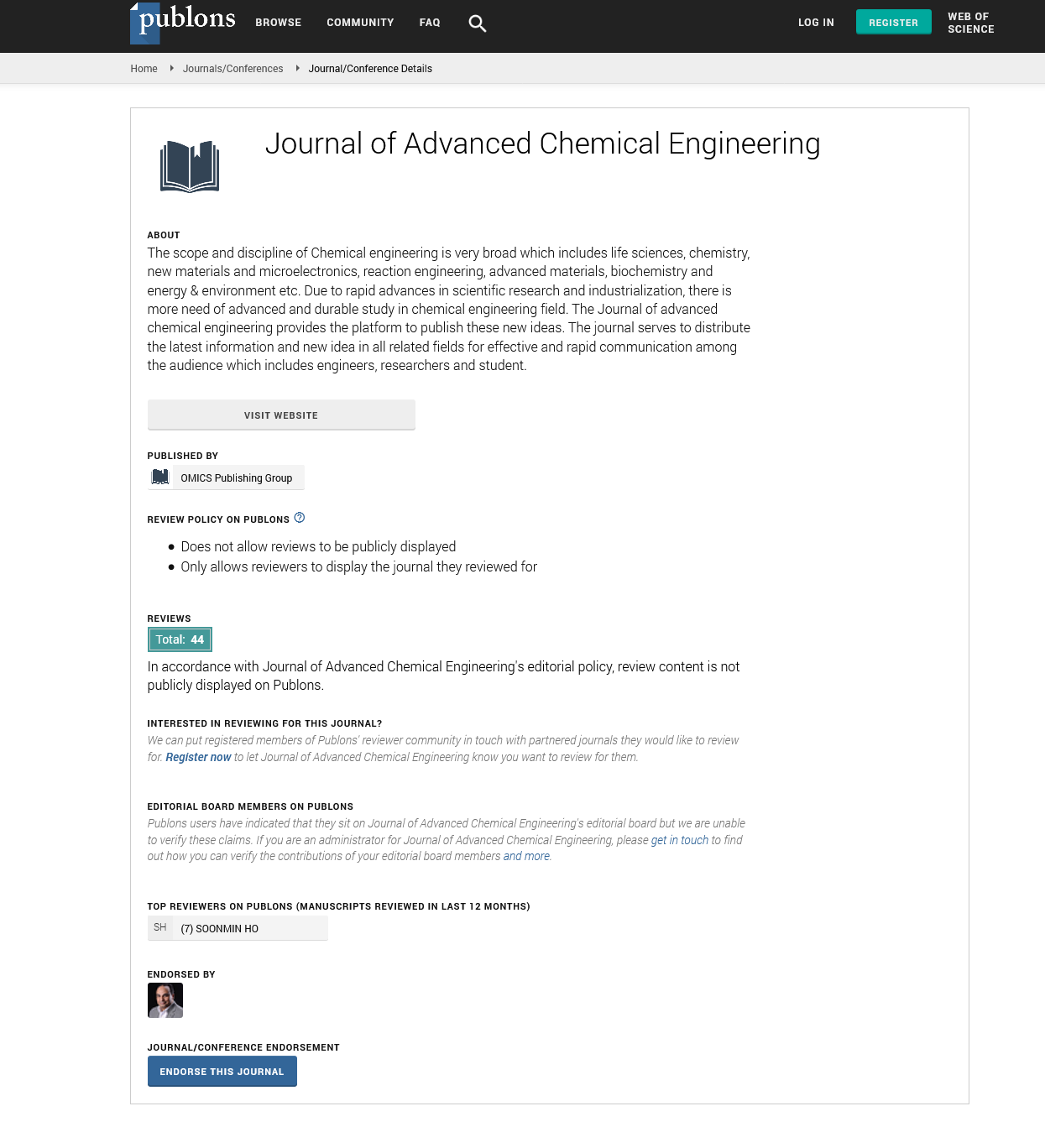Indexed In
- Open J Gate
- Genamics JournalSeek
- Smithers Rapra
- RefSeek
- Directory of Research Journal Indexing (DRJI)
- Hamdard University
- EBSCO A-Z
- OCLC- WorldCat
- Scholarsteer
- Publons
- Geneva Foundation for Medical Education and Research
- Google Scholar
Useful Links
Share This Page
Journal Flyer

Open Access Journals
- Agri and Aquaculture
- Biochemistry
- Bioinformatics & Systems Biology
- Business & Management
- Chemistry
- Clinical Sciences
- Engineering
- Food & Nutrition
- General Science
- Genetics & Molecular Biology
- Immunology & Microbiology
- Medical Sciences
- Neuroscience & Psychology
- Nursing & Health Care
- Pharmaceutical Sciences
Perspective - (2024) Volume 14, Issue 4
Optimizing Catalytic Processes for Efficiency and Feedstock Flexibility
Georgios Papandreou*Received: 28-Nov-2024, Manuscript No. ACE-24-28358; Editor assigned: 02-Dec-2024, Pre QC No. ACE-24-28358 (PQ); Reviewed: 16-Dec-2024, QC No. ACE-24-28358; Revised: 23-Dec-2024, Manuscript No. ACE-24-28358 (R); Published: 30-Dec-2024, DOI: 10.35248/2090-4568.24.14.350
Description
The refining and petrochemical industries are at a crossroads, grappling with complex challenges that demand innovation in chemical reaction engineering. These challenges are rooted in the need for greater efficiency, sustainability and adaptability in the face of dynamic market demands, stricter environmental regulations and the transition to renewable energy sources. As the backbone of these industries, chemical reaction engineering must address these hurdles by rethinking traditional processes and advancing novel technologies.
One of the foremost challenges in refining and petrochemical industries is optimizing catalytic processes, which play a central role in converting crude oil into valuable products such as fuels, chemicals and polymers. Catalysts, while essential for improving reaction rates and selectivity, often degrade under harsh operating conditions, reducing their efficiency and lifespan. The development of strong, high-performance catalysts that can withstand extreme temperatures, pressures and fouling is essential. Additionally, catalysts need to be customized for feedstock flexibility, accommodating the increasing use of unconventional resources like heavy crude, shale oil and biomass-derived intermediates.
Environmental sustainability is another pressing concern. Refining processes are major contributors to Greenhouse Gas (GHG) emissions and pollutants such as Sulfur Oxides (SOx) and Nitrogen Oxides (NOx). Reaction engineering must focus on designing cleaner processes and integrating Carbon Capture, Utilization and Storage (CCUS) technologies. For example, advancements in catalytic cracking and hydroprocessing units can help reduce emissions while improving energy efficiency. Similarly, innovative reactor designs, such as fluidized beds or microchannel reactors, can enhance heat and mass transfer, lowering the energy intensity of key processes.
The shift towards renewable energy sources presents additional challenges and opportunities for reaction engineering. As the global energy mix evolves, the petrochemical industry must adapt by diversifying feedstocks and incorporating renewable sources such as biomass, hydrogen and carbon dioxide. Reaction pathways for converting these feedstocks into valuable products often differ significantly from those used for fossil-based inputs, requiring the development of new catalytic systems, reactor designs and process models. For instance, the transition to green hydrogen through water electrolysis or methane pyrolysis has prompted the exploration of reactors that operate efficiently at varying scales and energy inputs.
Digitalization and data-driven approaches are also reshaping chemical reaction engineering. The adoption of advanced process control, machine learning and Artificial Intelligence (AI) enables more accurate modeling and optimization of reactions. These tools can predict reaction behavior under diverse conditions, identify bottlenecks and propose improvements in real time. The challenge lies in integrating these technologies seamlessly into existing operations, which often rely on legacy systems. Moreover, ensuring the reliability and interpretability of datadriven insights is critical for their widespread acceptance.
Another critical aspect is the push for circularity in the petrochemical industry. With growing emphasis on reducing plastic waste and promoting recycling, chemical reaction engineering must innovate in areas like chemical recycling and upcycling. Technologies such as pyrolysis, depolymerization and catalytic cracking of plastic waste are promising but require significant optimization to become economically viable at scale. Furthermore, these processes must be designed to handle the heterogeneity of waste streams while minimizing energy consumption and emissions.
In conclusion, chemical reaction engineering is at the forefront of addressing the various challenges faced by the refining and petrochemical industries. From catalyst development and process optimization to digitalization and the transition to renewable feedstocks, the field must evolve to meet the demands of a rapidly changing field. Collaboration across disciplines, investment in research and development and the integration of innovative technologies will be essential to overcoming these challenges and ensuring the long-term sustainability and competitiveness of these industries. As we navigate this transformative period, chemical reaction engineering will remain a foundation of innovation, driving progress toward a cleaner and more resilient future.
Citation: Papandreou G (2024). Optimizing Catalytic Processes for Efficiency and Feedstock Flexibility. Adv Chem Eng. 14:350.
Copyright: © 2024 Papandreou G. This is an open access article distributed under the terms of the Creative Commons Attribution License, which permits unrestricted use, distribution, and reproduction in any medium, provided the original author and source are credited.

